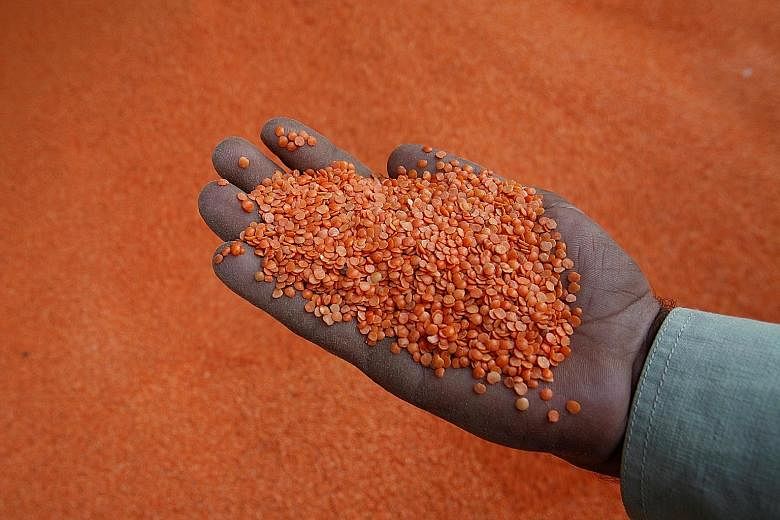WASHINGTON • The world will have trouble feeding itself in decades to come unless countries undertake "major transformations" in the way they grow and distribute food, the United Nations said in a report that paints a bleak and hungry future.
Due to a growing global population, agricultural output will need to increase by 50 per cent, the UN Food and Agriculture Organisation (FAO) warned in The Future of Food and Agriculture: Trends and Challenges report released on Wednesday.
Experts estimate that the world will have 10 billion mouths to feed in 2050, against 7.3 billion today.
Beyond just a growing population, diets are also changing from a cereal-heavy one to one that includes more meat, which requires significantly more grains and water.
For example, the average Chinese person went from consuming 13kg of meat per year in 1982 to 63kg of meat in 2016.
Groundwater sources are also being depleted rapidly. From the central valley of California to northern China, water reserves in 21 of the world's 37 largest aquifers are on the decline. Two billion people around the world rely on aquifers for their water supply. Likewise, climate change is altering weather and precipitation patterns, and in decades to come, is expected to shrink agricultural yields, especially in already-vulnerable regions such as the Sahel in Africa.
The UN estimates that 600 million people will be undernourished in 2030, and overall global food security will be "in jeopardy" unless there is a concerted effort to change eating habits and mitigate the worst effects of climate change.
Avoiding the report's dire forecasts is possible, if pricey, the report's lead author told Foreign Policy. Dr Lorenzo Bellu, senior economist at the FAO, said additional annual investments of US$265 billion (S$372 billion) would be needed till 2030 to keep the hungry fed.
That could include investments in new agricultural technology to improve crop yields, researching genetically modified organisms, new distribution methods, and more investments in humanitarian aid and development.
But it would also require shaking unsustainable habits, such as intensive agriculture, over-consumption of meats, and little practical action to tackle the causes of climate change. "Business as usual is not an option any more," Dr Bellu said. "The challenges we identified go beyond the capacities of any single specific country."
He noted that in many cases, hunger is due to the lack of access or purchasing power, not a dearth of food.
Countries wracked by conflict are especially vulnerable. South Sudan, is already facing famine, while three others - Yemen, Nigeria and Somalia - are on the brink of food scarcity. These countries are embroiled in armed conflict, showing that hunger and war go hand in hand.
The world would "absolutely, without question" be able to feed itself in the coming decades if it were simply a matter of growing enough food, said Ms Kimberly Flowers, director of the Global Food Security Project at the Centre for Strategic and International Studies.
But the problem, like in South Sudan, is that everything not related to food manages to get in the way of a full belly. "It's not just about responding to hungry people, it's about responding to longstanding political strife, conflict and inequality," said Ms Flowers.
WASHINGTON POST

